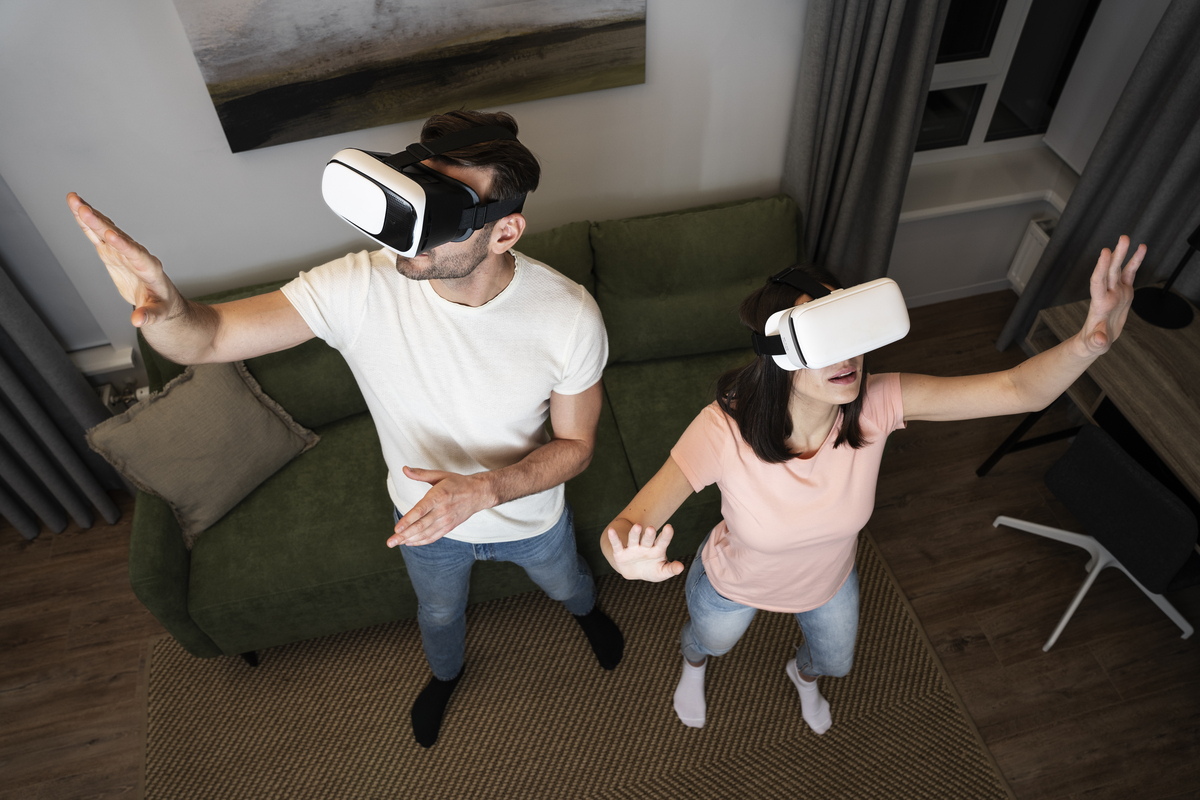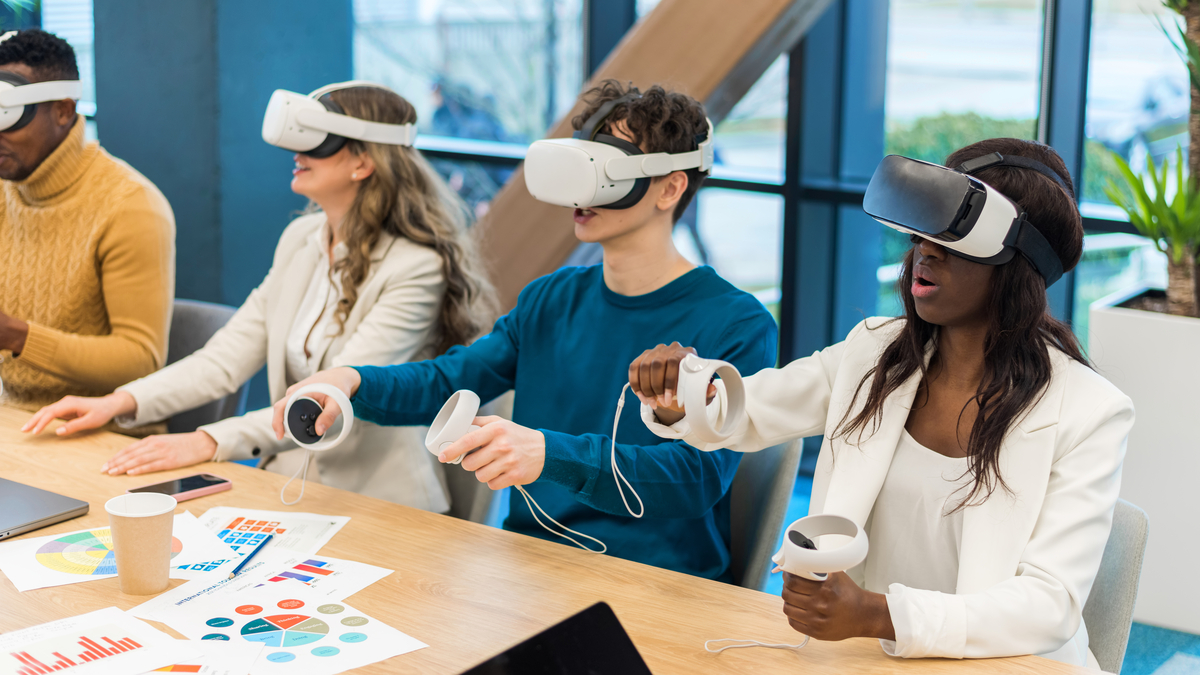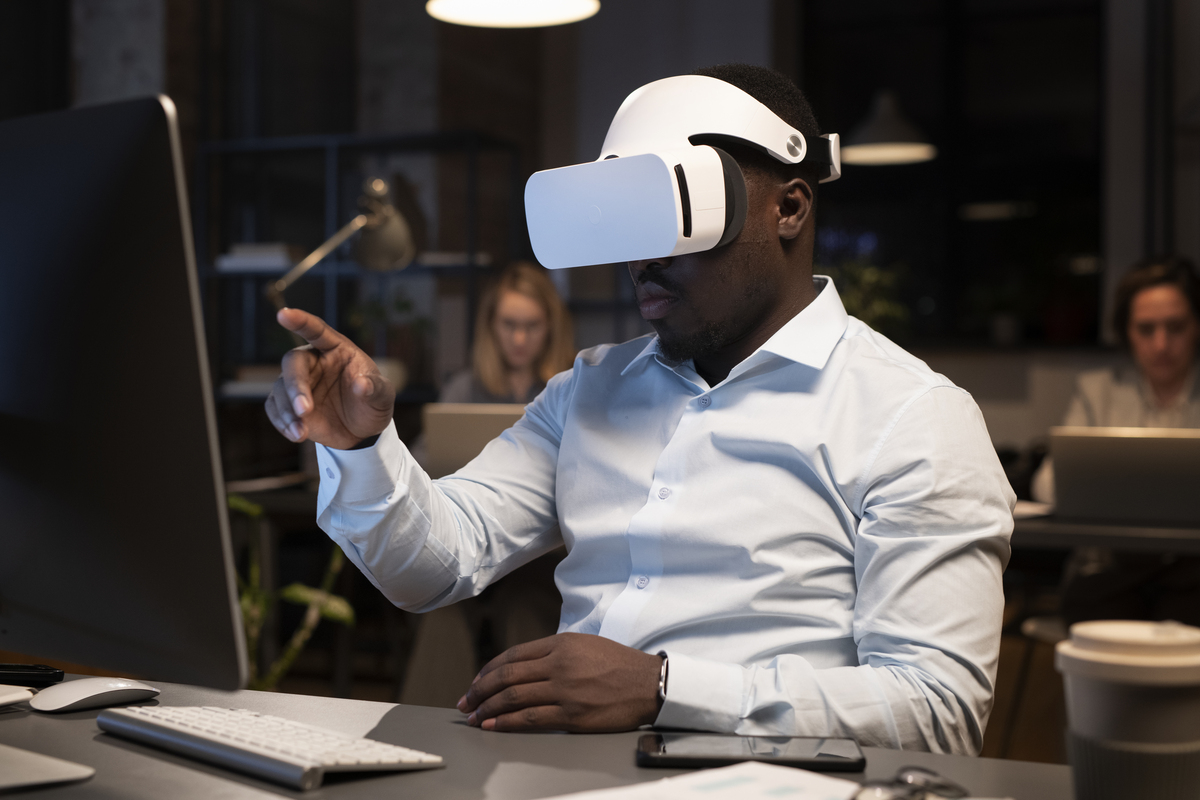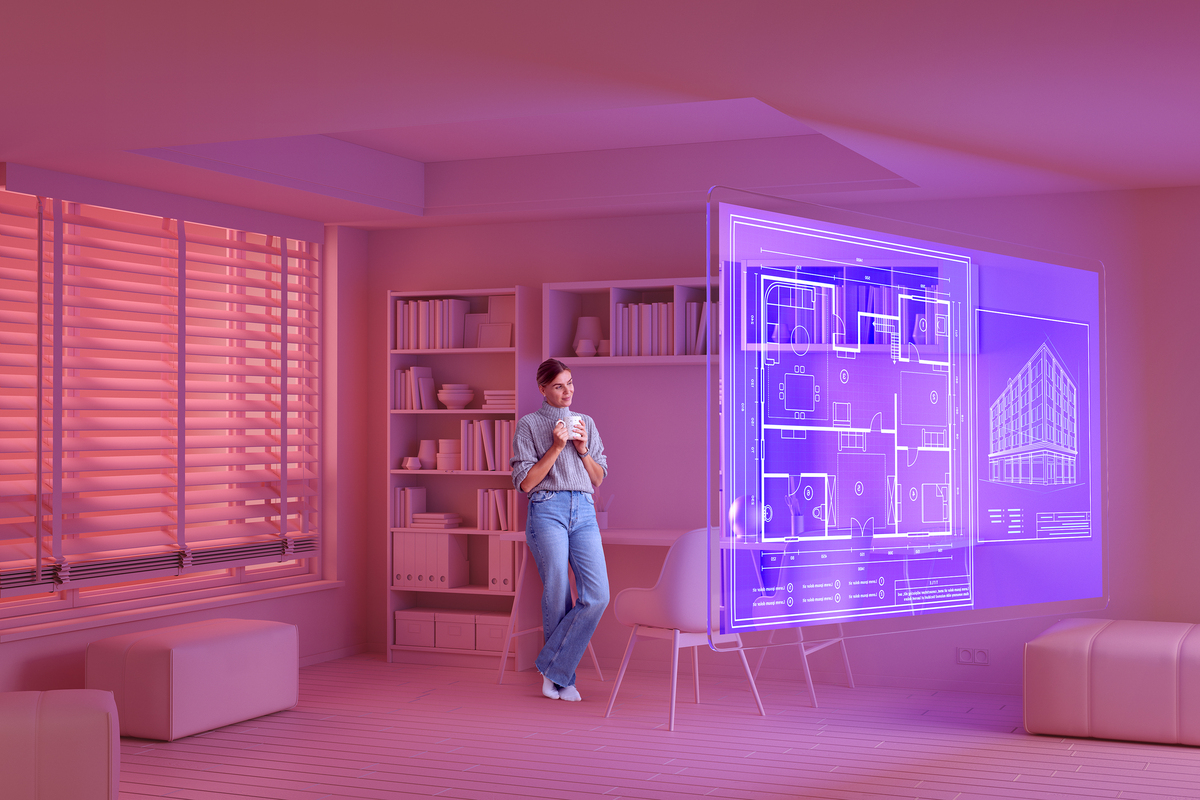Exclusive Neuroject Article: There are as many definitions of the metaverse as there are specialists, and its current meaning is still mainly hazy. The phrase “New digital territory” may be the most intriguing term of construction in the metaverse sector, or even the energy sector. It raises the issue of how digital living and working places are organized, mobilizing both cutting-edge technical limitations and more conventional knowledge. Niel Riemer, the creator of Roblox, emphasizes that user-generated content is essential to the construction in metaverse’s success.
The platforms remain weak in the absence of activity and creators; even Meta acknowledged this when it acknowledged that their Horizon Worlds was pitifully empty. Here is where architects can help. They see the metaverse as an infinitely creative playground. It’s an opportunity to investigate the concept of “Virtual public space,” to unleash creativity that is frequently constrained by the severe restrictions of reality, to bring back long-gone locations, and to test actual ideas in a virtual sandbox.
The most recent generation of connected gadgets is expanding into more multi-sensory forms, such as augmented reality glasses, virtual reality headsets, and others, with an emphasis on 3D immersion. The Metaverse is one such fashionable idea for construction in metaverse. Since the Facebook CEO outlined his idea and gave the massive social media company a new name “Meta” has become the topic that is trending the most.
Although Zuckerberg created the hoopla and gave it a “Consumerist” gloss, the idea of construction in metaverse has been around for a very long time. In the pilot phase, numerous organizations experimented with it and made an effort to successfully integrate it across several industries.
Table of Contents
Introduction
It is nothing new for the construction industry to use digital technologies for physical applications. BIM, which has been available for a while and has allowed owners, designers, and construction professionals to cooperate by developing and maintaining information for a built asset, in real time, through cloud-based software, was the starting point before CAD. Creating a digital representation of an asset that spans its entire lifecycle, from planning and design through building and operations, is the goal of BIM.
Many aspects of the metaverse are already incorporated into BIM, but it has one flaw: BIM is static by nature because it requires ongoing user input to update the model. The next phase for the building sector is to create a “Digital twin” using the metaverse. BIM components are used in Digital Twins, which also incorporate the Internet of Things, sensors, and algorithms to produce a dynamic model that can be updated without user input and conduct simulations to show how potential external influences might affect the physical asset.
In order to monitor and diagnose the state of the asset, the data acquired from sensors can be combined with historical data or simulations to maximize the performance of the asset. Predicting the construction timetable and then tracking the as-built status is one such application. Imagine a system of cameras and sensors that automatically updates the as-built model as building progresses, enabling an owner or contractor to track and simulate delays or acceleration by keeping track of the workforce’s productivity by the use of construction in the metaverse.
Suggested articles for reading: IoT in Construction | BIM in Construction

The ongoing monitoring necessary to accurately update a digital twin may pose some ethical or privacy concerns in a culture that values privacy more and more. For instance, a workforce might be continuously observed to gauge its effectiveness and development, potentially finding weak points or underperforming employees.
On the one hand, construction in the metaverse can reward transactions and people for “Beating” the simulation to release an incentive payment, but on the other side, it gives supplemental and unbiased data to reveal exactly who has been inefficient. We are all aware that absolute efficiency is a fantasy; many people strive for it but are never successful. A simulation must include a certain margin of error, but it begs the question: What is reasonable? 80% effectiveness… 70%. Efficiency that might be measured scientifically might be a negotiating point when quoting or pricing work.
The three-dimensional aspect of the model is the main distinction between BIM and digital twinning. Although BIM looks to be three-dimensional, it is always shown on a flat screen in two dimensions. On the other hand, a digital twin is fully immersed in three dimensions. Users can enter the virtual world and digitally explore the building by implementing construction in the metaverse, just like they would with any other physical space. This might help you better comprehend or see how different spaces and rooms might interact with one another, or it can help you think about potential finishes in light of the surrounding area.
Suggested articles for reading: Architecture in the Metaverse | Construction Monitoring
What is the Metaverse?
According to the definition, the metaverse is a virtual reality environment where users can communicate with other users and a computer-generated environment. It represents a virtual cosmos that can be encountered just like the real world in three dimensions, evolving from the internet. The answer is straightforward enough, but it has the power to completely alter the course of history. It is already.
As it will provide people the chance to experience the place as it is being produced, the use of construction in the metaverse will considerably aid designers and architects in creating environments in an increasingly efficient manner.
The development of construction in the metaverse and the unique capacity of the technology to allow people to walk through a nearly actual representation of the area can be advantageous to architects and designers, who traditionally rely on 3D modeling and visualizations to build spaces. By taking part in the construction of the metaverse, architects and designers can remotely collaborate on design concepts.
The use of construction in the metaverse will enable designers and architects to create places more effectively. Furthermore, it is crucial to recognize the value of the metaverse at each of the three stages of building, including design, development, and build. Through AR and VR, the concept gives a feel for the finished product that is almost genuine in the early stages.
Project managers, designers, and architects will surely profit from the construction in the metaverse, but they will also contribute to its creation. To construct any location in the virtual world, from creating indoor to outdoor spaces which they also do in the physical world architects and designers are crucial.
The powers of the construction in the metaverse are still being discovered. But as the world moves more and more in the direction of cutting-edge technology, it is only a matter of time before it becomes a widely used resource on a global scale. The built environment’s construction in the metaverse is merely the beginning, and the sector has yet to realize the full potential of what future conceptions may accomplish by opening up a universe of possibilities.
Suggested articles for reading: Virtual Reality in Construction | Augmented Reality in Construction

Who are the Creators?
- Architects: In order to create experiences that mimic and enhance real-world designs, architects are essential. They are no longer constrained by physical laws like gravity because we have mobile furniture and rooms that can be transformed into party halls as needed. There are countless options for construction in the metaverse.
- Game Designers: One of the most crucial elements of blockchain games is game design. It is the responsibility of designers to make fun virtual worlds and gaming. In the metaverse, this problem is considerably more difficult to solve. Designers must go beyond games and concentrate on developing narratives that link virtual and real-world events. Games that allow users to engage with their friends’ virtual avatars in the same way they would in the real world are one such example.
- Content Creators: Creators of material and artists may now claim ownership of their work and establish direct contact with investors thanks to the rise of non-fungible tokens (NFTs). The addition of the metaverse to this scenario might give content production a new depth. For instance, musicians might hold online performances in venues within the metaverse, with NFTs serving as entry passes. Similar to this, metaverse artists may produce NFT artwork to adorn virtual residences and sell it anywhere.
- Real Estate Developers: Real estate developers stand to gain from the entrance of the metaverse in an economy where land and homes are being sold as NFTs. In the metaverse, ownership is intended to be transferrable, and absolute, and to need far less paperwork than in conventional real estate. Similar to the chance to purchase real estate in Manhattan 250 years ago, some experts are thinking about buying metaverse land. Virtual land might be a great opportunity to get ahead of the competition and invest in a new real estate game with amazing growth potential. The economy of metaverse real estate may expand rapidly as more commercial players and brands, including Nike and Adidas, purchase land.

Construction in the Metaverse
As it will provide people the chance to experience the place as it is being produced, the use of construction in the metaverse sector will considerably aid designers and architects in creating environments in an increasingly efficient manner.
The development of the construction in the metaverse and the unique capacity of the technology to allow people to walk through a nearly actual representation of the area can be advantageous to architects and designers, who traditionally rely on 3D modeling and visualizations to build spaces. By taking part in construction in the metaverse, architects and designers can remotely collaborate on design concepts.
Furthermore, it is crucial for construction project managers to be fully knowledgeable about the design and construction of buildings. Even though they are unable to be present everywhere, building managers can keep a constant eye on everything that is happening during the construction stage thanks to the virtual representation of the surroundings by the use of construction in the metaverse.
The importance of the metaverse must also be understood during each of the three stages of building, including design, development, and construction. The idea offers a close-to-real experience of the end result at different phases through AR and VR.
The construction in the metaverse will undoubtedly be advantageous to architects, designers, and project managers, but they will also help to build it. In the virtual world, architects and designers are essential to the creation of any space, from indoor to outdoor settings, just as they are in the real world.
The powers of the metaverse are still being discovered. But as the world moves more and more in the direction of cutting-edge technology, it is only a matter of time before it becomes a widely used resource on a global scale.
The built environment’s construction in the metaverse is merely the beginning, and the sector has yet to realize the full potential of what future conceptions may accomplish by opening up a universe of possibilities.
The creation of the metaverse necessitates learning new talents and shifting viewpoints. construction in the metaverse is likely to reach new heights with the creation of indistinguishable sites that will remain unaffected by natural causes and thus preserve credible structure as the younger generation of architects become more versed in digital and 3D technology.
The improved version of computer-aided design (CAD) techniques is called building information modeling (BIM). The building and engineering industries have the most activity in this area of the virtual reality world.

Benefits of Construction in Metaverse
The growth of the Metaverse will have significant advantages for the construction sector. The capacity to simulate construction projects in virtual environments gives designers and engineers the chance to test out various building materials, designs, and configurations before actual construction starts.
Construction in the metaverse offers chances for collaboration and stakeholder engagement while also saving time and money. The Metaverse can be used as a training and development tool, allowing staff members to practice new abilities in safe conditions and gain expertise in simulations. The development of the Metaverse has great potential benefits for the construction sector, and those that adopt it first will probably have a competitive advantage in the market. Here are some of the key benefits of construction in the metaverse:
1. Streamlined Design and Planning
Construction industry experts may develop 3D simulations and models using the Metaverse, which streamlines the design and planning process. Teams can discover possible problems and make improvements before construction starts thanks to virtual walkthroughs and immersive design experiences, eventually saving time and costs. Real-time data analytics and visualization help to further optimize designs, resulting in creative and affordable architectural solutions by the use of construction in the metaverse.
2. Improved Training and Education
Immersive, practical training opportunities are one of the construction in the metaverse’s most important advantages. Virtual simulations can be used by professionals and construction workers to learn critical skills like equipment operation and safety procedures. Continuous learning and upskilling are advantageous for individual careers as well as the industry’s overall growth and development.
3. Sustainable and Eco-friendly Construction
Promoting green and sustainable building methods can be greatly helped by construction in the metaverse. Construction teams can work toward producing more sustainable buildings by modeling environmental effects and improving designs for energy efficiency and waste reduction. Virtual testing and prototyping reduce the demand for actual materials as well, lowering the industry’s carbon footprint and fostering a more environmentally friendly future.
Suggested article for reading: Eco Friendly Building
4. Enhanced Cost and Time Management
By using real-time data analysis and predictive algorithms, the metaverse can assist construction teams in efficiently managing timetables and budgets. Teams can prevent expensive setbacks by making proactive modifications by anticipating risks and delays. Projects are finished on schedule and under budget thanks to the integration of Internet of Things (IoT) sensors and smart construction technology.
5. Reduction of Construction Errors and Delays
Construction in the metaverse can anticipate problems and conflicts by building a thorough digital model of the project. Errors and delays may be avoided as a result, saving both time and money.
6. Increased Safety for Workers on Construction Sites
Before accessing the actual site, workers can practice construction jobs in the metaverse and spot any potential dangers. This can make the workplace safer for everyone by reducing the risk of accidents and injuries.
Suggested article for reading: Construction Safety

Metaverse Impact on Construction
Construction can be impacted in a number of ways by using the metaverse in project-related work. Here are a few instances:
1. Immersive Computing and Remote Collaboration
The identification of more effective resources will result from the employment of immersive technology and computing in the metaverse for a more remote collaboration during design and planning. The metaverse’s impact on projects may serve as a proving ground for jobs that would actually occur in the real world, such employing VR and AR to test traffic flow, ambient acoustics, and driverless car scenarios. The necessity for in-person meetings and business travel can be eliminated, as well as approval processes and design-to-construction timescales, by using VR/AR to immerse team members and clients in 3D spaces.
Using VR/AR, architects may visualize their work in a 3D working environment. This would need using technology that will make it easier for employees to construct models, interact with the physical world, and show off their products to clients. There are numerous possibilities for using the metaverse in the real world.
2. Utilization of Digital Twins
Recently, researchers and professionals have dedicated to modernizing, digitizing, and building digital twins of infrastructure. Using related data, digital twins serve as a virtual representation of physical assets like systems and structures.
As the value for consumers derives from the data, including operational specifics and service history, this is a crucial component of comprehending the metaverse’s influence on the industry. Users can visualize future states and optimize goals through the implementation of digital twins, which can then be created independently by various partners at the site or state level.
Suggested article for reading: Digital twin technology in construction
3. Virtual Careers
With a goal of creating 40,000 virtual employees by 2030, we should get ready for the possibility of in-demand jobs in virtual real estate. Some of the real estate jobs we see today will ultimately transfer into virtual real estate jobs, allowing landowners to sell undeveloped land to developers who will use it to create amazing virtual experiences, for example.
Opportunities for work in land planning and design where individuals can choose how to best divide the land itself. Contractors and subcontractors will provide funding for fixtures, interior design, landscaping, and other projects.
For those who are in charge of rent collecting, maintenance, customer service, marketing, leasing, and tracking performance for the entire build, opportunities in property management will grow.
In many real estate developments, property managers will assemble committees of tenants to implement voting procedures on specific issues like closing times, holidays, and the kinds of companies that are permitted. Landowners collaborate with designers and architects to plan outbuildings that customers would want to visit, both in real-world and virtual scenarios.
4. Investment
According to a March 2022 analysis from Citi, the metaverse impact-related economy’s total addressable market size by 2030 might reach $8–13 trillion. More than double as much money as was invested in the metaverse in just the first five months of 2022—$57 billion—according to a report by McKinsey & Company—with venture capital, private equity, start-ups, and well-known companies all looking to take advantage of the opportunity.
We also see that, just like in the real world, there are those operating inside the ecology of virtual lands who attempt to foresee development and acquire the most coveted property where they anticipate making a profit. All of these initiatives closely correspond with current events in the outside world.
The greatest way to profit from virtual land, though, is to monetize it. This is exactly like the actual world, where buildings are constructed on top of land plots to raise the value of such plots.

Challenges of Construction in the Metaverse
The idea of construction in the metaverse, a shared virtual universe where people may connect, is attracting more interest and funding from investors and the tech sector. The creation of such a large and intricate virtual world, however, presents major difficulties for the building sector.
Creating a fully interactive, immersive environment that easily connects with current technologies is the first obstacle. To do this, a multidisciplinary approach is necessary, involving collaboration amongst professionals in software engineering, game design, and architecture to build a coherent and useful metaverse. The following are some additional significant challenges that must be overcome:
1. High Cost of Implementing Construction in the Metaverse
The creation of a metaverse necessitates a large investment in network infrastructure, software, and hardware. For many businesses, especially smaller ones, this can be a huge obstacle.
2. Need for Specialized Skills and Training
A certain set of abilities and knowledge, including programming, game design, and virtual world building, are needed to build a metaverse. It can be difficult to find and train employees with these talents, especially in a market where jobs are scarce.
3. Privacy and Security Concerns
Construction in the metaverse, like any virtual setting, raises significant concerns concerning security and privacy. Any metaverse’s success will depend on how well user data is safeguarded and how well hackers can’t access the site.
Suggested article for reading: Security in Construction site
Case Studies for Construction in the Metaverse
The metaverse idea is still in its infancy, and applications in a variety of sectors, including the construction in the metaverse industry, are still being investigated. Here are a few case study examples of the construction industry’s utilization of the metaverse, though:
- HoloBuilder, a Singapore-based business, has developed a metaverse platform that enables building contractors to produce 3D models of structures, construction sites, and infrastructure projects. With the help of this platform, construction projects can be managed remotely, teams can work together in real-time, and construction project progress can be examined. a wonderful illustration of metaverse constructors.
- The Autodesk Tandem platform, a metaverse-based platform that links building owners and operators with construction crews, architects, and engineers, was introduced by Autodesk in 2020. The platform enables stakeholders to work together on building designs and manage building data from conception to operation, including monitoring and managing data on building performance, maintenance schedules, and other information. It belongs to the top tier of metaverse construction firms.
- The virtual reality platform created by the UK-based company The Wild is another illustration of how construction in the metaverse works. With the help of this technology, construction crews, architects, and engineers can work together remotely on building designs and walkthroughs in real-time.
- The US-based corporation Trimble, which offers technological solutions to a number of sectors, including the construction industry, has also created a metaverse platform called Trimble Connect. With the help of this platform, construction industry professionals can work together on projects in real-time, see construction plans, and control project data from one spot.
These are just a few instances of how the construction sector is utilizing the metaverse to improve project administration, collaboration, and design. We’ll probably see even more cutting-edge metaverse uses in the building and other industries as technology develops and progresses.

The Future of Construction in the Metaverse
Construction in the metaverse will probably continue to develop and spread, shaping innovation in the building and real estate sectors for years to come. The use of immersive technology and digital twins to enhance the design, planning, and administration of building projects and real estate assets is expected to gain importance in the upcoming years.
These innovations will help businesses operate more productively and efficiently, which will result in time, resource, and financial savings. Additionally, they will help businesses assess and comprehend their assets more fully, which will improve performance and lower risk. Construction in the metaverse will become much more accessible as new protocols are introduced, allowing individuals and organizations to collaborate, co-create, tokenize, and trade metaverse experiences and business ventures.
Long-term integration of the metaverse with the construction and real estate sectors is anticipated to foster innovation and reshape how these sectors function. As time goes on, it will be crucial for businesses to stay on top of these advancements and seize the opportunities construction in the metaverse offers.
The metaverse is projected to have a significant and disruptive impact on the building and real estate sectors. Amara’s law states that we frequently overestimate the immediate effects of technology while underestimating its long-term effects. However, construction in the metaverse is likely to have a large and long-lasting impact on the environment and operations of commercial real estate.
Construction in the metaverse brings novel opportunities and challenges that will influence the future of building and real estate, making this a thrilling time for the sector. It will be crucial for businesses to be aware of these developments as the metaverse develops and grows and to be ready to innovate and adapt in order to remain competitive.

Conclusion
A new horizon for the building sector has opened up with the rise of the metaverse. Construction procedures will probably get increasingly entangled with digital technology as this virtual environment develops, ushering in a time of higher efficiency, sustainability, and innovation. All industry stakeholders will need to work together as they continue to learn, adapt, and progress toward construction in the metaverse’s future.
Construction in the metaverse presents potential as well as difficulties for the building sector. Building projects can be designed, simulated, and tested in a virtual setting, which can result in significant cost savings, improved productivity, and better teamwork. But issues with data security, access to technology, and privacy must be resolved.
The constructed environment will become more sustainable, effective, and egalitarian if the building sector keeps up with the most recent metaverse technologies and collaborates with other stakeholders to address issues. Construction could undergo a revolutionary change thanks to the metaverse, but it will depend on our ability to adapt and develop.
Suggested article for reading:
important construction technology in 2024
World’s Best Modern Architecture Buildings
Resources: ConstroFacilitator | Accubits | vegavid | projectpro | Blockworks | Leonard | rejolut | LinkedIn | capsulesight | constructionweek | constructionplacements
For the pictures: Freepik




